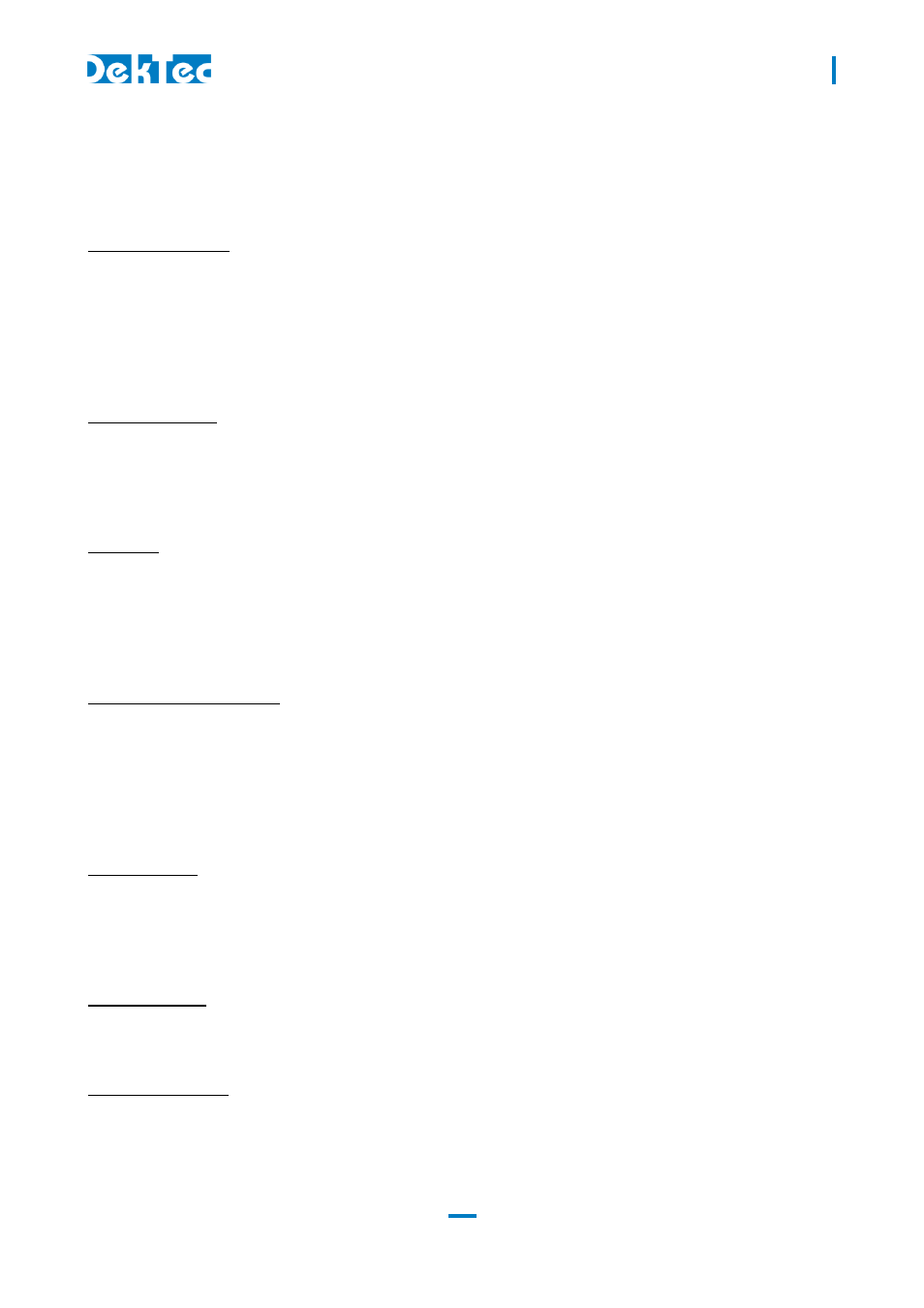DekTec DTC-300 StreamXpress User Manual
Page 40

DTC-300-SP – StreamXpress
USER MANUAL
40
The DVB-T2 modulation uses different length for the guard interval to allow echo cancelation. The
StreamXpress offers 4 different guards interval length: 1/128, 1/32, 1/16, 1/8, ¼, 19/128,
19/256. The fraction number represents the ratio of empty symbol versus useful symbol duration.
#4 L1 Modulation:
The DVB-T2 L1 post-signaling block indicates which auxiliary stream is used as a transmitter
signature as well as the exact location of the stream and also carries the transmitter-signature
related information. The user can choose which modulation to use for the L1 signal. StreamXpress
supports BPSK, QPSK, 16-QAM, 64-QAM. Note this is not the main sub modulation mode of the
DVB-T2 which is set in the PLP area.
#5 Pilot Patterns:
DVB-T2 specification makes use of scattered pilot patterns for use by receivers to compensate for
changes in channels in the time and frequency domain. StreamXpress allows for 8 different pilot
patterns: PP1, PP2, PP3, PP4, PP5, PP6, PP7 or PP8.
#6 PAPR:
PAPR stands for Peak to Average Power Ratio. DVB-T2 offers two techniques for the reduction of the
peak-to-average power ratio (PAPR), thus increasing the RF power-amplifier efficiency. These
techniques are Active Constellation Extension (ACE) and Tone Reservation (TR). StreamXpress
software allows choosing ACE, TR, ACE+TR or none.
#7 Bandwidth Extension:
DVB-T2 allows for the extension of the number of used carriers for the 8k, 16k and 32k mode while
at the same time keeping the bandwidth limits of the RF channel. This mode is called the Extended
Carrier Mode. This mode is only available for 8K, 16K, 32K FFT. If it is setup when the FFT mode is
different that the available modes, the frame structure will be disabled and the TS rate will show -1
for error.
#8 Frequency:
This setting allows choosing the center frequency of the modulated RF channel. The frequency must
be set in Hz. In the screen capture example the bandwidth is set to 8MHz so the RF output will span
from 470MHz to 478MHz.
#9 Network ID:
This is a 16-bit field which uniquely identifies the current DVB-T2 network.
#10 T2 System ID:
This 16-bit field identifies uniquely the T2 system within the T2 network.
